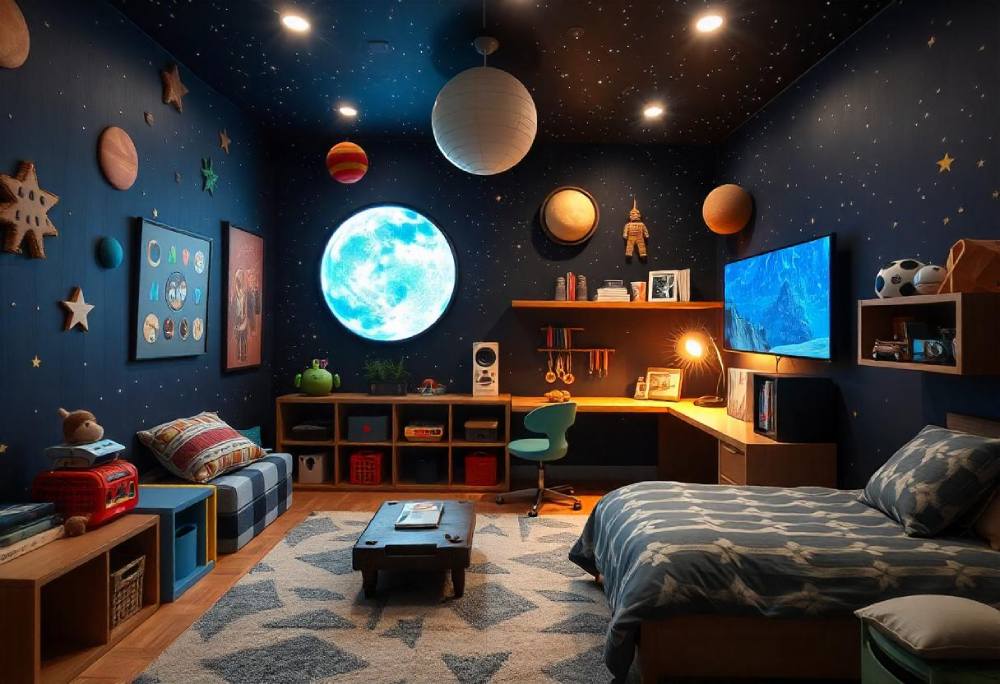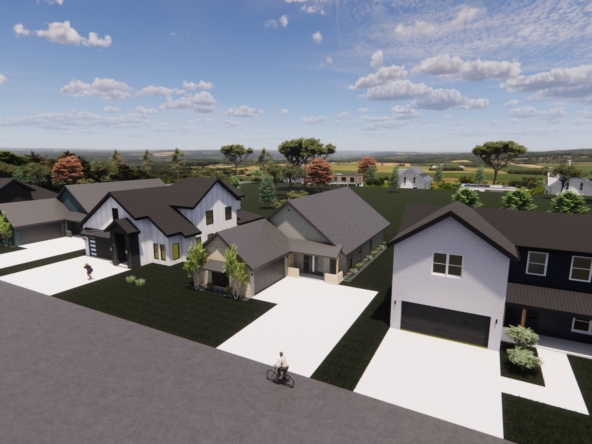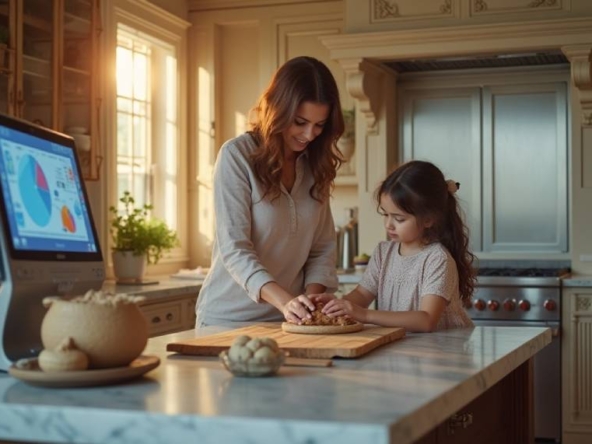When moving into a new home, one of the most exciting tasks for parents is designing the perfect space for their children. Children’s rooms should be more than just a place to sleep—they should serve as a creative, stimulating environment where kids can learn, play, and grow. At XNA Developers, we understand the importance of designing spaces that are both functional and fun, so here’s your ultimate guide to creating children’s rooms and play areas that are not only visually appealing but also promote learning and creativity.
1. Choose a Theme that Inspires Imagination
Start by choosing a theme for the room that will capture your child’s imagination. Themes can be based on their favorite hobbies, colors, or characters, but make sure it’s something that can grow with them. Here are a few theme ideas that can evolve as your child grows:
- Adventure & Exploration: Think outer space, deep sea exploration, or jungle safaris. These themes can incorporate learning about animals, planets, or different countries. As they grow older, you can switch out items while keeping the general theme intact.
- Nature & Outdoors: Bring the beauty of nature indoors with greenery, earth tones, and natural elements. Wall decals of trees, mountains, and animals can make for a soothing yet inspiring atmosphere.
- STEM/Tech-Inspired: For tech-loving children, consider a room based on science, technology, engineering, and math (STEM). Educational posters, building toys like Legos, and fun DIY science projects can keep the room both fun and informative.
2. Make Learning Fun with Educational Elements
One of the best things about designing a kid’s room is integrating educational elements in a way that feels playful, not forced. Here are some ideas to incorporate learning into their space:
- Interactive Wall Decals: Transform blank walls into a space for learning. For younger kids, alphabet and number decals can teach basic skills, while older children may enjoy world maps or charts about the human body, space, or animals.
- Bookshelves and Reading Nooks: Encourage reading with creative bookshelves and cozy reading corners. Create an inviting space with soft seating, colorful cushions, and easy access to books. The more accessible and inviting it is, the more likely your child will be to pick up a book.
- Learning Through Art: Allow kids to express themselves artistically while learning. Set up an easel or craft station with plenty of art supplies. Not only does this boost creativity, but it also teaches patience and problem-solving skills.
3. Build a Play Area for Active Kids
A play area is crucial in children’s rooms, especially if they’re full of energy. To make sure your kids will enjoy spending time in their room, here are a few ideas for creating a play-friendly environment:
- Climbing Wall: If you have the space, consider installing a climbing wall or a soft play area. It’s a fun way to help kids develop physical coordination and strength while keeping them active indoors.
- Soft Play Mats or Rugs: For younger children, soft mats or rugs help create a comfortable play area. Choose ones with educational designs (like numbers or shapes) to make playtime more engaging.
- Interactive Toys: Add toys that encourage both fun and learning. Building blocks, puzzles, and STEM-based toys are great choices. If you have more space, an indoor slide or mini trampoline can add to the fun.
4. Incorporate Functional Furniture
While it’s important to have fun, children’s rooms should also serve as functional spaces for sleeping, studying, and storing belongings. Here’s how to mix fun and function in their room design:
- Convertible Furniture: If you’re designing a room that will grow with your child, consider using convertible furniture that can adapt over time. A crib that turns into a bed, or a changing table that becomes a desk, can save you money while maximizing the room’s potential.
- Multi-Use Storage: Keep the space tidy by choosing furniture with built-in storage, such as beds with drawers underneath or benches that double as storage boxes. Storage cubes or baskets can help kids easily store their toys, books, and games, teaching them organizational skills.
- Study Area: As your child grows, they’ll need a designated study space. A desk with plenty of storage, a comfortable chair, and good lighting will encourage them to spend time reading, drawing, and doing homework. Personalize this area with inspirational quotes or designs that align with their interests.
5. Maximize Natural Light and Add Fun Lighting Fixtures
Natural light is essential for a child’s room, as it helps improve mood and productivity. If your child’s room has plenty of windows, make the most of it with light, airy curtains or blinds that can easily be opened to let the sunshine in.
Additionally, consider incorporating fun lighting fixtures that will make the room feel cozy and magical at night:
- Fairy Lights or LED Strip Lights: These can be draped around the room or used as part of the bed frame to create a warm, inviting atmosphere.
- Themed Lamps: Lamps shaped like animals, rockets, or stars can add a playful touch while providing soft lighting.
- Night Lights: Choose fun, character-driven night lights to ease your child into bedtime while adding whimsy to the room.
6. Foster Creativity with Play-Based Learning
Designing a room where kids can engage in play-based learning helps develop creativity and cognitive skills. Here are some ideas to include in the room:
- Craft Tables: Set up an area where kids can create crafts, doodles, or even build models. This boosts fine motor skills, creativity, and problem-solving.
- Interactive Boards: Magnetic chalkboards or whiteboards are great for spontaneous learning. Children can write, draw, or even practice math problems and puzzles in a fun and low-pressure environment.
- Building Blocks & Puzzles: Offer a selection of educational toys like Legos, puzzles, or other building materials that challenge their thinking and improve concentration.
7. Personalize with Keepsakes and Memorabilia
Finally, make sure the room reflects your child’s personality and interests. Personalizing their space can help them feel more comfortable and invested in their environment. Hang up artwork they’ve made, photos of family trips, or souvenirs from special events.
Conclusion
Creating a children’s room in your new home that is both fun and educational can be an exciting adventure for both you and your child. Whether you’re designing a play area that promotes physical activity, adding creative and interactive learning tools, or choosing furniture that grows with your child, every detail plays a part in building an environment where kids want to spend time. With these tips from XNA Developers, you can create a space that’s not only enjoyable but also supportive of your child’s growth and development.
By making thoughtful decisions about design, functionality, and play-based learning, you’ll be able to craft a room where your child can thrive, explore, and most importantly, have fun!




